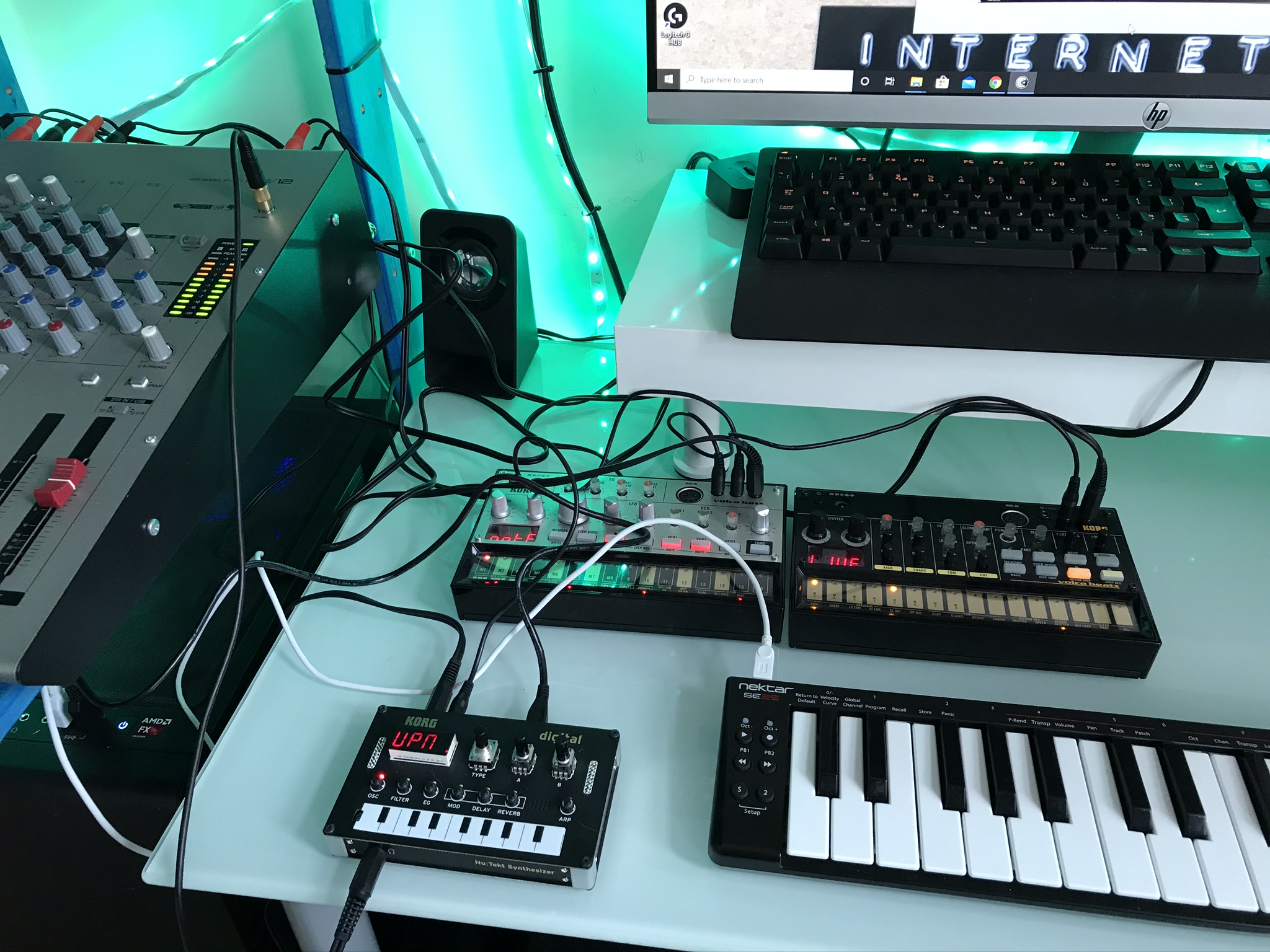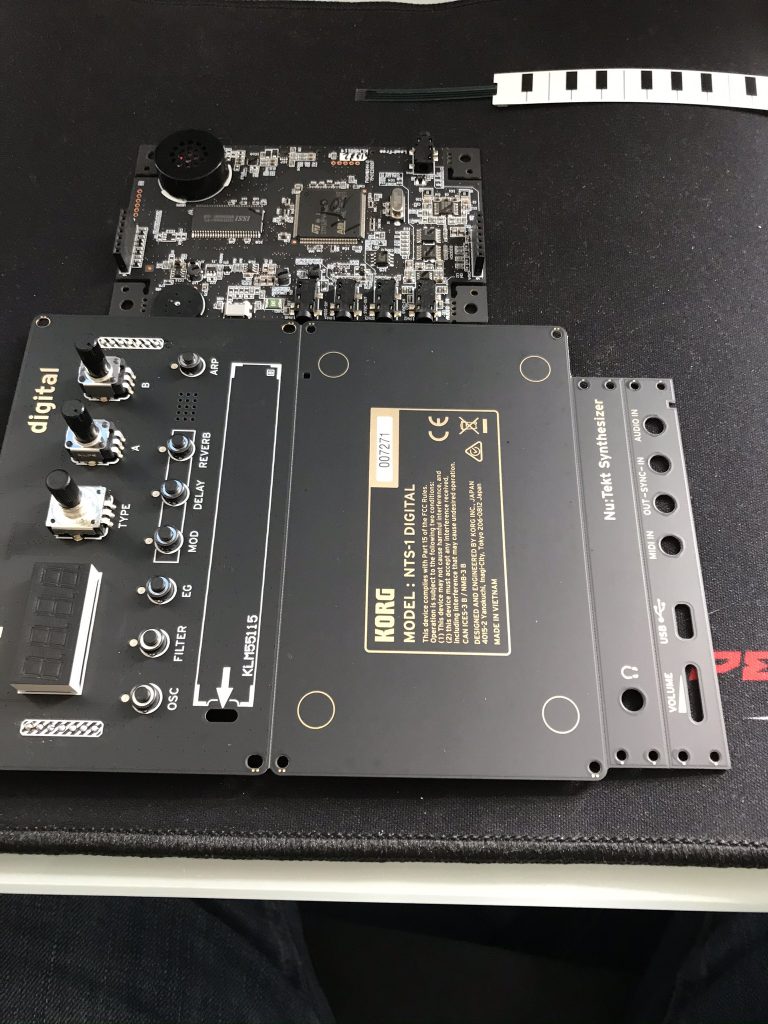Korg Nutekt NTS-1 Digital synth kit – An early overview.
Just as a little background to start with, I have played synths and keyboards for years. I love mucking about with an envelope in ways that would get you ejected from a Post Office. And all of those posts you see on social media saying ‘No filter’? That’s because I have all of the filters, for, well, subtractively filtering out the harmonics that I do not require.
Lost? Then this post is probably not for you, this is a brief article about me building and using the Korg Nutekt NTS 1 Digital synth kit, which is quite a mouthful. Although would be easy to fit in your mouth as it is tiny. Don’t put it in your mouth though, it would be very crunchy and would probably invalidate the warranty.
It is a single oscillator synthesiser with a multi-mode digital filter and an effects unit. All for under a hundred pounds! It comes in kit form and you build it up, there is no soldering or anything like that. The only difficult parts are snapping the boards apart that becomes the case and the circuit board. That and the tiny fiddly screws, but that is partly an issue to my massive hands. It has a little ribbon control style keyboard, which is not of a great deal of musical use, but it means you can a sound out of it straight away.
Once built it is a sturdy little thing, and I do mean little, it is smaller in two dimensions than an iPhone 7 (it is quite a bit thicker fact fans). Powered by the included USB cable, it can run from an adaptor socket, battery pack or even plugged into a computer. If you do that last one the USB also carries MIDI data, so you don’t need the little ribbon keyboard. That is a good thing, as it has less musical merit than most of insert recent boy band name here.
Around the back you have the USB, 3.5mm sync in and out (Volca style), 3.5mm audio in, MIDI on another 3.5mm jack and a volume fader. On the front panel there is a 3.5mm headphone/audio out socket. Like the aforementioned Volcas there is no ‘proper’ audio out, to make the device as small as possible. Which it is, very tiny. Have I mentioned that? I can live with the loss of line outs for a device like this.
I have only had the synth a couple of days, so I have not got to the bottom of all of its features, but it is a wonderful sounding thing. I have seen comments online that it sounds ‘too digital’, which is a stupid complaint. It is digital. It does a passable virtual analogue sound with some of its waves, but it also has VPM waves (Variable Phase Modulation) which is a sort of FM, and a user option. That is where this device really shines, it is effectively the same oscillator as Korg’s larger Monologue XD and Prologue synthesizers. Both of those have analogue oscillators and one digital one. That is essentially the same as the one in the NTS1, the main difference is that on the two keyboards both the digital and analogue oscillators go through a multi-mode analogue filter. The NTS 1 has a specific digital filter instead. These similarities mean that user waves designed for both of those devices will load into the NTS 1 as well. Giving lots of flexibility and options, as well as an upgrade path if you find that you get on with the NTS 1.
On the top panel there is a row of buttons that let you select between the oscillator, filter (cutoff and resonance) and envelope. Then the next three buttons are for the effects, mod (chorus, ensemble, phaser etc), delay and reverb. The final button on the right turns the arpeggiator off and on. If you press and hold the ARP button then the ‘latch’ feature comes on. This means that whatever notes you play under the arpeggiator stay on until you play some more. You can then turn it off again by long holding the button again.
Above the buttons there is a small red segment LED display, think 1980’s LED watch. I know I am doing. To the right of that are three knobs, four if you count me, the first one is an endless encoder that selects the type of whatever button you have pressed, the other two are simple potentiometers that alter some aspect of the sound. When the OSC button is lit then the first knob on the left changes the wave type, the next changes the waveshape and the third adds harmonics.
I am using mine with my Korg Volca Beats and Bass and I am using my mixer to send some of the audio from them into the audio in of the NTS 1 and using its effects on that. It seems to put the audio after the filter in the signal chain so that does not affect the sound coming through. So now I have a three oscillator analogue mono lead and bass synth, an analogue drum machine and a monophonic digital synth with built-in effects, all for less than three hundred quid. Not bad, of course, they are limited in lots of ways, but that is sort of the reason that I love them.
When I am making music I am as easily distracted as I am when I am writing. When music software gives me lots of options I tend to get lost in them and find that after an hour I have not made anything beyond a mournful parp.
I have made more music with this setup in three days than I have with my other devices in years, and more importantly, I have had fun doing it.
Is that not the point really? Should we not be entertained? I know that I am not making music to make money, I make music for fun. My fun.
Can you put a price on fun? Yes, about one hundred quid in this case.
P.S. I am fully aware that my music is the equivalent of Vogon poetry.


Leave a Reply